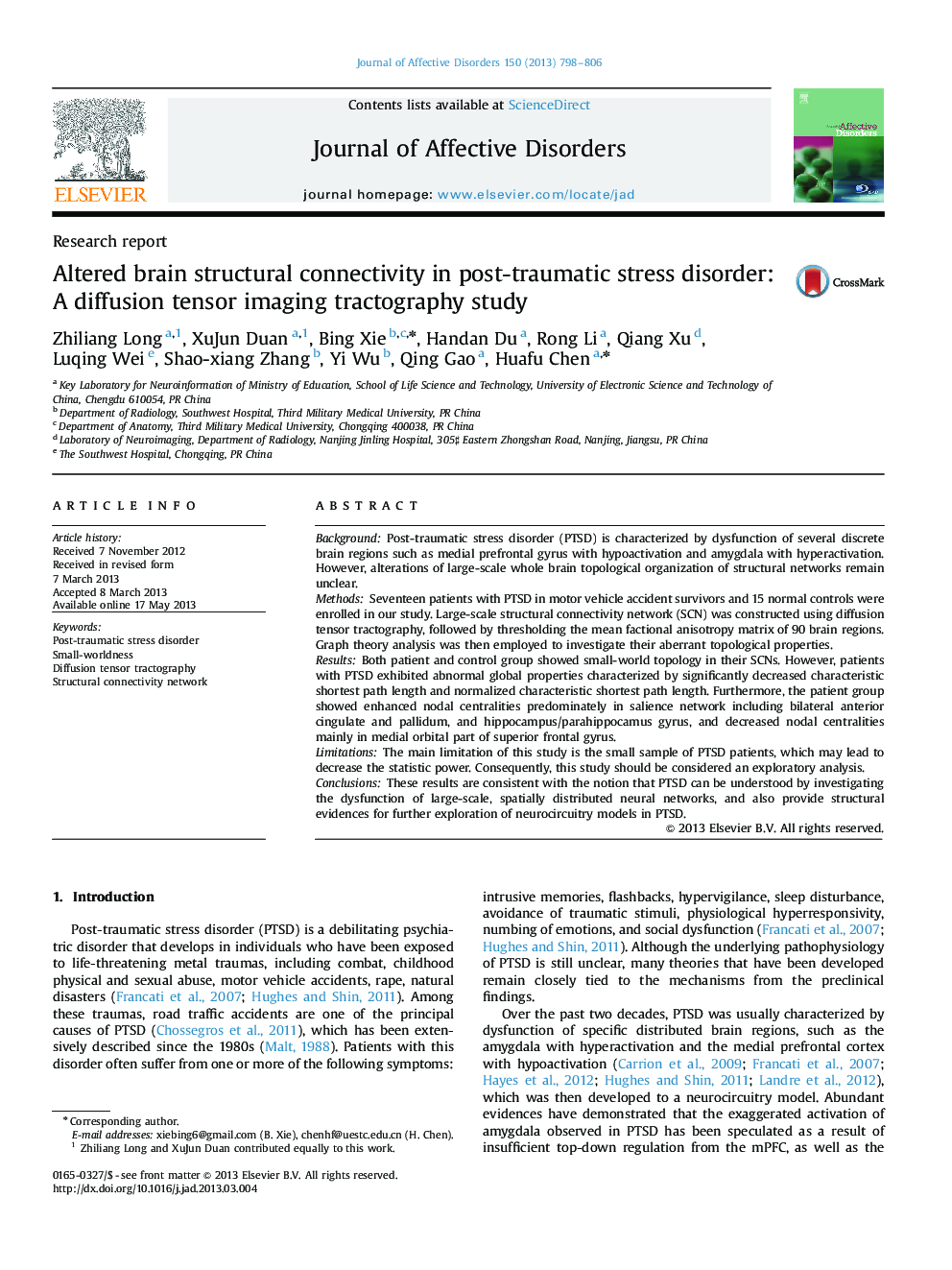| Article ID | Journal | Published Year | Pages | File Type |
|---|---|---|---|---|
| 6233582 | Journal of Affective Disorders | 2013 | 9 Pages |
BackgroundPost-traumatic stress disorder (PTSD) is characterized by dysfunction of several discrete brain regions such as medial prefrontal gyrus with hypoactivation and amygdala with hyperactivation. However, alterations of large-scale whole brain topological organization of structural networks remain unclear.MethodsSeventeen patients with PTSD in motor vehicle accident survivors and 15 normal controls were enrolled in our study. Large-scale structural connectivity network (SCN) was constructed using diffusion tensor tractography, followed by thresholding the mean factional anisotropy matrix of 90 brain regions. Graph theory analysis was then employed to investigate their aberrant topological properties.ResultsBoth patient and control group showed small-world topology in their SCNs. However, patients with PTSD exhibited abnormal global properties characterized by significantly decreased characteristic shortest path length and normalized characteristic shortest path length. Furthermore, the patient group showed enhanced nodal centralities predominately in salience network including bilateral anterior cingulate and pallidum, and hippocampus/parahippocamus gyrus, and decreased nodal centralities mainly in medial orbital part of superior frontal gyrus.LimitationsThe main limitation of this study is the small sample of PTSD patients, which may lead to decrease the statistic power. Consequently, this study should be considered an exploratory analysis.ConclusionsThese results are consistent with the notion that PTSD can be understood by investigating the dysfunction of large-scale, spatially distributed neural networks, and also provide structural evidences for further exploration of neurocircuitry models in PTSD.
